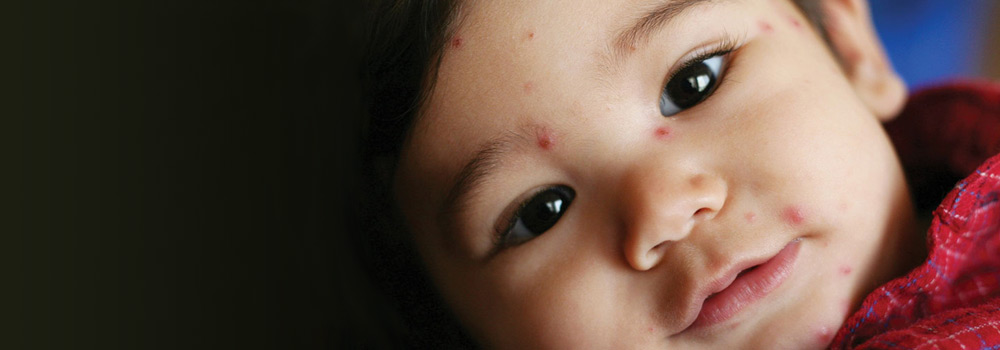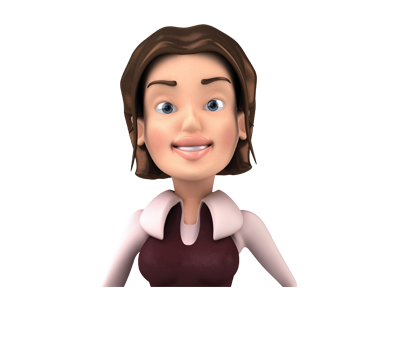Chickenpox is a mild and common childhood illness. It causes a rash of red, itchy spots that turn into fluid-filled blisters, which then crust over to form scabs, which eventually drop off. Some children have only a few spots, while others can have spots covering their entire body. These are most likely to appear on the face, ears and scalp, under the arms, on the chest, tummy and on the arms and legs.
Chickenpox is caused by a virus. It is infectious from one to two days before the rash starts, until all the blisters have crusted over. To prevent spreading the infection, Public Health England advises to keep children off nursery/school until five days after the onset of the rash.
Your child will probably feel pretty miserable and irritable while they have it. They may have a fever for the first few days and the spots can be incredibly itchy.
Paracetamol can help relieve fever and calamine lotion or cooling gels help ease itching.
Chickenpox usually gets better on its own. However, some children can become more seriously ill and need to see a doctor.
Contact your GP straight away if:
If you are pregnant and have had chickenpox in the past it is likely that you are immune to chickenpox.
However, please contact your GP or midwife for advice.
Measles is a very infectious, viral illness which, in rare cases, can be fatal. One in five children with measles experience complications such as ear infections, diarrhoea and vomiting, pneumonia, meningitis and eye disorders. There is no treatment for measles. Vaccination is the only way of preventing it, so make sure your child has their MMR vaccination. Speak to your health visitor.
Symptoms develop around 10 days after you are infected and can include:
After a few days, a red-brown spotty rash appears. Starting behind the ears it then spreads around the head and neck before spreading to the rest of the body. If there are no complications symptoms usually disappear within 7-10 days.
Contact your GP if you suspect that you or your child may have measles.
Help to make your child comfortable:
-
Close the curtains/dim lights to help reduce light sensitivity.
-
Use damp cotton wool to clean eyes.
-
Give sugar-free paracetamol or ibuprofen.
-
Ensure they drink lots.
If your child is in pain or has a high temperature (fever), you can give them paracetamol. Do not give ibuprofen to children with chickenpox because it may increase the risk of skin infection.
Aspirin should not be given to children under the age of 16.



